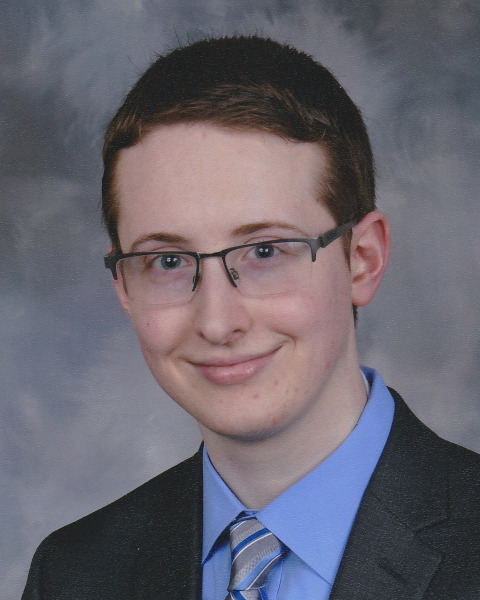Infectious Diseases Works in Progress
Session: Infectious Diseases Works in Progress
WIP 83 - Identifying Biomarkers for COVID-19-Associated Multisystem Inflammatory System in Children in the Salivary Microbiome
Saturday, April 26, 2025
2:30pm - 4:45pm HST
Publication Number: WIP 83.7580
Brandon O'Sullivan, University of Hawaii at Manoa, Honolulu, HI, United States; Katherine W. Herbst, Connecticut Children's Research Institute, Hartford, CT, United States; Alexander H. Hogan, Connecticut Children's Medical Center, Hartford, CT, United States; michele maltz-matyschsyk, University of connecticut, South windsor, CT, United States; Justin Radolf, UConn Health, FARMINGTON, CT, United States; Michael A. Lynes, University of Connecticut, Storrs, CT, United States; Juan C. Salazar, University of Connecticut School of Medicine, Hartford, CT, United States; Joerg Graf, University of Hawaii at Manoa, Honolulu, HI, United States

Brandon O'Sullivan (he/him/his)
Graduate Student
University of Hawaii at Manoa
Honolulu, Hawaii, United States
WIP Poster Presenter(s)
Background: Pediatric cases of COVID-19 are typically mild, but are not without risk of more serious complications such as Multisystem Inflammatory Syndrome in Children (MIS-C). MIS-C is characterized by severe whole-body inflammation, with onset 2-6 weeks after SARS-CoV-2 infection. MIS-C is often confused with Kawasaki disease (KD) in clinical settings as both present with high inflammatory markers and similar physical exam findings. Previous studies have linked changes in the salivary microbiome to diseases such as rheumatoid arthritis and diabetes, suggesting that this microbiome could be used as a novel biomarker for MIS-C status.
Objective: Our aim is to characterize salivary microbiome signatures in MIS-C patients compared to those with KD, acute SARS-CoV-2 infection, and Controls. In our preliminary dataset, we identified differentially abundant bacterial taxa and distinct microbial community patterns across these clinical presentations. This work will also analyze follow-up samples to determine whether any differences are transient or represent stable communities.
Design/Methods: This analysis is part of a prospective cohort study which enrolled children with MIS-C or comparison cohorts (hospitalized for KD, hospitalized for COVID-19, or Controls) with IRB (#21-004) approval, from April 2021 to March 2024. Salivary samples were collected at enrollment and six weeks later. Bacterial DNA was extracted from saliva and amplified using Intus Biosciences’ Shoreline Complete StrainID kit. This approach amplifies a ~2,500 bp region containing the entire 16S rRNA gene, a spacer region, and part of the 23S rRNA gene, improving taxonomic resolution compared to more traditional amplicon-based approaches. Our final sequencing run using PacBio technology will be completed by December 1. For data analysis, we will infer Amplicon Sequence Variants with DADA2 by the end of 2024. By February 1, 2025, we will perform PERMANOVA analyses to test for differences between cohorts and ANCOM to identify specific bacterial taxa that differ in relative abundance and complete the data analysis.

